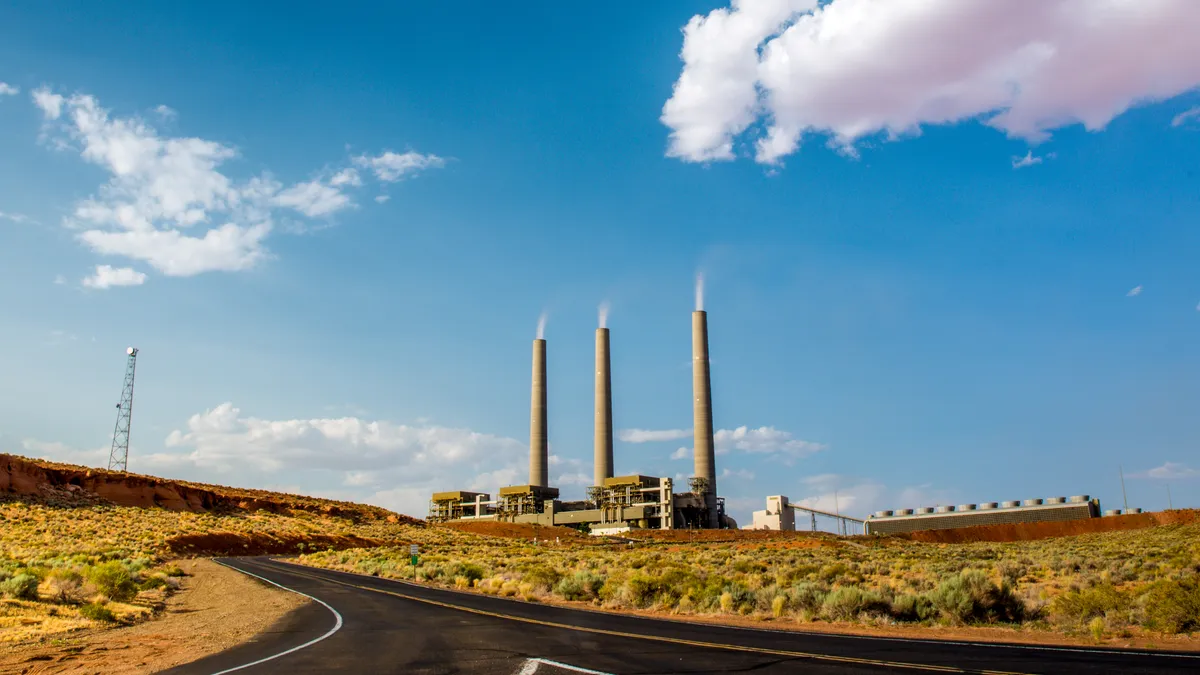Dive Brief:
- The U.S. Department of Energy (DOE) is exploring the possibility of using energy storage resources to improve the performance and flexibility of fossil fuel plants, and intends to announce a funding opportunity for projects in the second quarter of 2020.
- Co-locating energy storage with fossil-fueled facilities could provide more reliable and affordable energy with cleaner environmental performance, benefiting asset owners and the grid, the agency said in a press release Tuesday. The funding opportunity is being offered by the Advanced Energy Storage Program run by DOE's Office of Fossil Energy, and is part of a broader effort to position the U.S. as a global leader in the storage industry.
- The effort comes amid storage-related supply chain disruptions and project delays, caused by the COVID-19 pandemic. The economic turmoil caused by the outbreak could cast uncertainty over the sector's growth over the next five years, according to analysts.
Dive Insight:
The DOE's Energy Storage Grand Challenge, announced in January, includes a mix of research and development, workforce building and other measures to build domestic storage supply chains. The agency is focused on encouraging the development and commercialization of new technologies and this funding opportunity supports that goal, DOE said in a press release.
The department is hoping to solicit research and development projects for energy storage technologies that could be used in existing fossil-fueled power plants and new facilities. The technologies could also be used for fossil-fueled systems that go beyond electric generation, like waste heat recovery. The technologies the DOE is looking at include thermal and chemical energy storage.
The Office of Fossil Energy said it is "looking to leverage the low-cost production of hydrogen from fossil fuels with zero or near-zero emissions to facilitate energy storage that can support the use of domestic energy supplies and affordability, improve domestic energy production and use, and enhance the security, reliability, and resilience of energy infrastructure."
The Energy Storage Association (ESA), which represents more than 180 industry players, is pleased to see that the DOE is building programs that support its Grand Challenge and incorporate the many technologies that make up grid storage's applications, CEO Kelly Speakes-Backman said in an emailed statement.
While storage does support the increasing penetration of renewables on the grid, it also improves the efficiency and flexibility of existing fossil fuel power plants, she said.
"By increasing the performance of these plants, energy storage can help reduce the actual fossil fuel use for every kWh produced, decreasing emissions and increasing grid reliability and resilience. This is a welcome effort as our grid endures extreme stresses from the changing profile of energy use — whether because of global crises like COVID-19, the electrification of our economy, or the changing mix of resources used to fuel our power," said Speakes-Backman.
The move comes as the COVID-19 pandemic causes disruptions to storage supply chains around the world. A majority of battery cell materials are produced in China, South Korea and Japan, Yayoi Sekine, head of decentralized energy at BloombergNEF, said during a webinar hosted by ESA on Wednesday. Delays can be caused not just because of local production challenges due to the coronavirus outbreak, but also because shipping and delivery is impacted.
The U.S. had about 50 GWh of lithium-ion battery manufacturing capacity at the end of 2019, a figure that was expected to more than double by 2021 — "but that obviously is at risk as we're expecting delays in construction," she added.
The disruptions are causing the sector to question how it can make supply chains more resilient, according to Sekine.
"There's a lot of questions around local supply chains … and I think that's probably something that we expect to happen more and more if the coronavirus lasts for longer and longer," she said.
The pandemic could cause some projects that were slated for deployment this year to be pushed to 2021, Dan Finn-Foley, head of energy storage at Wood Mackenzie, said during the webinar.
"From there, the economic downturn is going to drive a lot more uncertainty from 2022 to 2025," he said. "All in all, this is going to result in potentially hundreds of millions of dollars moved from the energy storage market out to 2025."














